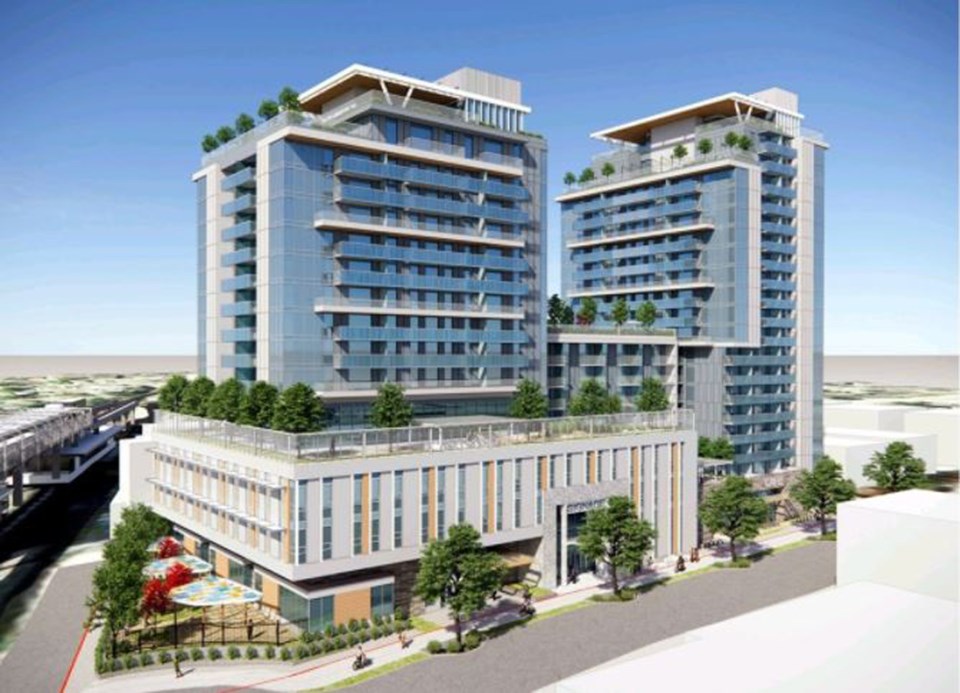Over the past two years, the BC General Employees' Union has worked diligently with the City of Burnaby planning department on our proposal to deliver 292 units of much needed rental housing — at least 50% of which will be affordable.
While the project is anchored in our union’s need to find a new, larger location for our Lower Mainland Area Office, there are benefits well beyond that. In the lead up to the March 29th public hearing on our rezoning application, I feel it’s critical to provide accurate information about how our project will benefit the city of Burnaby and the Royal Oak community, as well as what it could mean for the housing affordability crisis in general.
First, I want to be clear that these units will be available to everyone, not just union members. I also want to emphasize that, beyond much needed office space for our union and much needed affordable rental housing units, our proposal also includes a 49-space affordable child-care centre and community amenities.
Some have raised concerns that the 25-year-old official community plan (OCP) stipulates medium density mixed use and industrial zoning around the immediate site. Aside from the fact that the OCP should be revised to reflect the urgency of our current affordable housing crisis, I want to note three critical facts about the proposed location of our project.
First, we chose a location where there are no single-family homes deliberately to ensure the density would not disturb the traffic or flow of the area. In fact, the location offers a natural path to build a road around the entire building, allowing for proper egress where there is now a cul-de-sac. Our project proposes four levels of parking and bicycle stalls to prevent any outflow on the street, and we have conducted traffic studies to satisfy the city that the project will not adversely impact the broader area.
Second, the modest up-zoning in the area will not impact affordability for nearby residential areas, as the site area is confined to the north side of the Skytrain and is surrounded by adjacent medium density mixed used and industrial properties.
Third, and most importantly, the location next to the Royal Oak Skytrain station is in accordance with the recommendations Burnaby city council adopted from the Mayor’s Task Force on Community Housing. The Task Force was convened in February 2019 with a mandate to recommend ways to “increase the supply, diversity and affordability of housing” in Burnaby. Crucially, the final report stated that many “community plans are outdated, and do not address the need for a range of affordability, accessibility, amenities and services that characterize a sustainable community” and recommended the city “encourage the practice of approving additional density for projects providing below-market rental housing”, subsequently agreed to by over 75% of survey participants.
The BCGEU’s proposed project is based on a simple premise that has the potential to create new opportunities for affordable housing. That is, convert the value of the land lift from rezoning to much-needed affordable housing amidst the current crisis.
Our union has long advocated for the use of spot-zoning around transit hubs such as Skytrain stations to build sustainable, long term affordable rentals such as the ones we are proposing and we have opposed the practice of spot-zoning for projects that do not offer an affordable housing component. We note with some irony that some who prominently oppose our project supported spot-zoning in Metrotown prior to the 2017 amendment to the OCP, in a move that saw hundreds of working families forced from their homes.
Besides offering real and substantive affordable rentals in a crisis, the BCGEU is seeking to be a committed long-term neighbour in the community. This is a project whose units will remain affordable for a minimum of fifty years, and will be properly cared for and maintained throughout that period. Many who grew up in Burnaby can no longer afford to live in the city and are being forced to move abroad and commute long distances, or live in substandard housing conditions. Burnaby city council has taken a leadership role in the province by adopting the recommendations of the Mayor’s Task Force, and this is why we chose this city for our project.
Paul Finch is treasurer of the BCGEU



